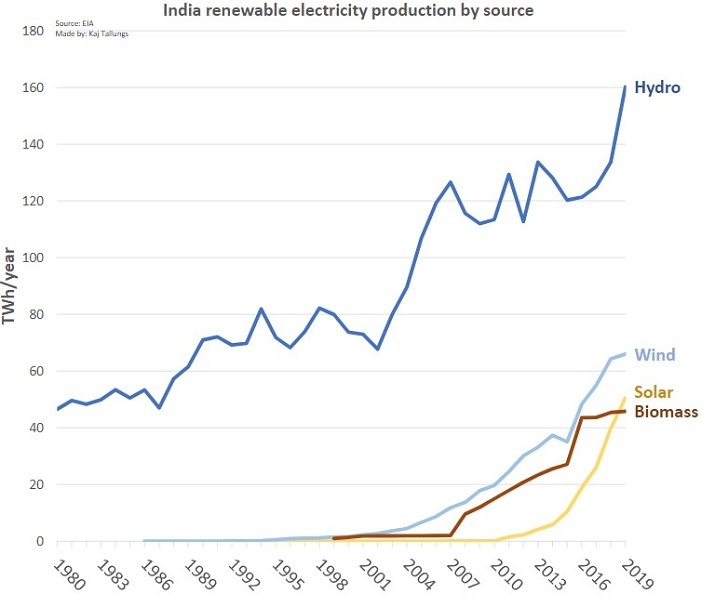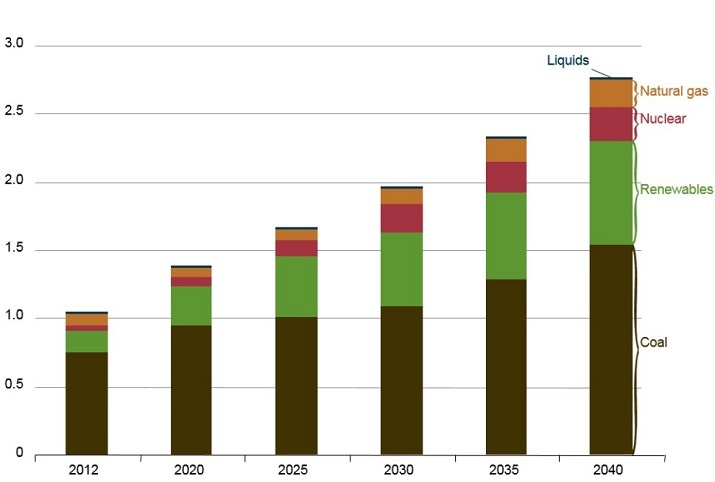
 Data Structure
Data Structure Networking
Networking RDBMS
RDBMS Operating System
Operating System Java
Java MS Excel
MS Excel iOS
iOS HTML
HTML CSS
CSS Android
Android Python
Python C Programming
C Programming C++
C++ C#
C# MongoDB
MongoDB MySQL
MySQL Javascript
Javascript PHP
PHP
- Selected Reading
- UPSC IAS Exams Notes
- Developer's Best Practices
- Questions and Answers
- Effective Resume Writing
- HR Interview Questions
- Computer Glossary
- Who is Who
Power Infrastructure and Generation
Introduction: What is Power?
Power refers to the energy reserve of a nation that runs the industries and helps the nation achieve economic growth. Power is an inseparable part of all modern economies. No country can survive and grow without adequate power resources. Power resources can be divided into hydro, oil, gas, coal, nuclear, etc.
It is important to note that the growth of modern economies is fully dependent on the availability of power as it is needed to run factories, vehicles, and other modes of transport and industries. Power is also needed in households where it helps run household infrastructure for a better quality of life.
The power infrastructure in India is primarily built by the government but recently private players have also come up as partners. India's power generation is still not enough as the burgeoning population and the growth of the economy has resulted in more requirement than the available limits. However, as renewable and nuclear sources are increasingly used, it is reiterated that India will become self-reliant in power in the near future.
So, power can be stated as the most essential part of the infrastructure that runs the economic activities of a nation. In the broader sense, power helps run industries and households and without it, the economy cannot grow. Moreover, if there is a shortage of power, it will result in contracted GDP leading to a lack of improvement and well-being of citizens in the economy.

Challenges Faced by Power Infrastructure in India
While we talk about power, there are numerous challenges associated with its production and distribution in India. Although the gap between requirement and production is decreasing, India still needs to improve a lot to become self-sufficient in power generation.
The major challenges faced by the Indian power sector are as follows
Stressed Accounts
Stressed accounts are the most strenuous worry for the power sector in India. India has 34 stressed accounts that are valued at 1.80 lakh crores. It is a matter of high concern for the banks because solving the matter via IBC will take the value away from the assets.
Structural Issues
There are some structural issues in the power sector in India. The major issues involve the following
The reliability of fuel supply for power generation is not perfect. So, power generation companies cannot be 100% efficient in their operations.
The price reforms have not been meaningful. Although the government tends to help the power sector, price reforms have not taken place yet.
The finances available for public sector power generation companies are largely unsustainable. That is why many potential players stay away from taking part in power generation.
The imbalance in the power sector
According to the standing committee on energy, the power sector in India is pretty unbalanced. Although de-licensing in power generation has helped energy generation companies, the transmission and distribution of power are still largely ineffective. This has resulted in the loss of complete usage of generated power leading to general losses that could be utilized if proper distribution facilities were available.
Problems with the most used resource - Coal
Coal is India's most used resource for energy generation. However, there are many issues that plague the optimum use of fuel at a larger level. Some of the issues that are notable in the coal sector include
The supply shortage of coal has impacted the power generation companies as most of the coal mines have already been auctioned but the availability of the fuel for power generation has not been met sufficiently yet. The Supreme Court of India has given a verdict in favor of the power sector but it has not been implemented yet.
As the domestic supply is limited, the power generation companies have to depend on imported coal which results in a deficiency in domestic capacity. Notably, here again, the domestic availability needs to improve to make the power sector self-sufficient.
There are some mines where mining has been halted due to clearance issues. The clearance issues have resulted in less mining of coal due to which the ultimate sufferers, the power generation companies, have seen disruptions in power generation.
Demand for Power in India

The demand for electricity in India has been constantly rising due to the increasing population and growth of the economy which is leading to the establishment of numerous industries. The electricity sector has improved a lot in the past few decades. However, there is still room for improvement and the government and public sector companies are trying to fill the gap between availability and demand.
The use of wind and solar power has also increased sufficiently in India. According to data, India is ranked fourth in wind energy resources while it is ranked fifth in solar energy production. However, the nation is progressing fast to increase the share of renewable resources in power production.
India will also have to increase its share in nuclear power to achieve its energy targets in the future. Rill now only about 2% of total energy output has been in the form of nuclear energy. Nevertheless, the government is looking forward to expanding this sector to meet the growing energy needs too.
However, as far as India's current position is considered, India must improve the availability of coal to make significant progress in energy generation. That will require the government to take some bold steps which may seem aggressive in the current situation.
Conclusion
India is in a culminating position to emerge as a strong economic power in the world and it would need to improve its power generation capacities in order to attain that position. Although the path is set, India must clear the governance bottleneck in some sectors to improve energy production in some sectors. In other sectors, it may need to increase the capacity of production. Both of these steps would require the government and public sector to move ahead hand in hand. The path of progress won't be far if India can manage to produce enough power according to its requirements.
FAQs
Qns 1. What is meant by power?
Ans. Power refers to the energy reserve of a nation that runs the industries and helps the nation achieve economic growth. Power is an inseparable part of all modern economies. No country can survive and grow without adequate power resources. Power resources can be divided into hydro, oil, gas, coal, nuclear, etc.
Qns 2. Which type of power is mostly used in India?
Ans. Thermal power is mostly used in India.
Qns 3. What is the percentage share of coal in terms of installed capacity in India?
Ans. Coal has a share of 58.59% of the installed capacity of the power sector in India.

